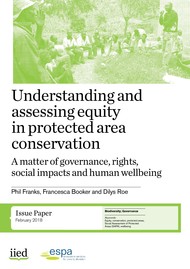Social Assessment for Protected and Conserved Areas (SAPA) Methodology manual for SAPA facilitators

This manual provides detailed guidance for using the Social Assessment for Protected and Conserved Areas (SAPA) methodology.
SAPA is a relatively simple and low-cost methodology for assessing the positive and negative impacts of a protected or conserved area (PA/CA) and related conservation and development activities on the wellbeing of communities living within and around the PA/CA.
It uses a multi-stakeholder process that enables PA/CA stakeholders working together to increase and more equitably share positive social impacts, and reduce negative social impacts.
The methodology uses a combination of i) community meetings to identify significant social impacts, ii) a short household survey to explore these impacts and related governance issues in more depth, and iii) stakeholder workshops to validate the results, explore other key issues, develop and plan relevant actions and review progress. SAPA can be used with PA/CAs of any kind.
This second edition replaces the first edition, which was published in March 2016.
Cite this publication
Available at https://www.iied.org/14659iied






